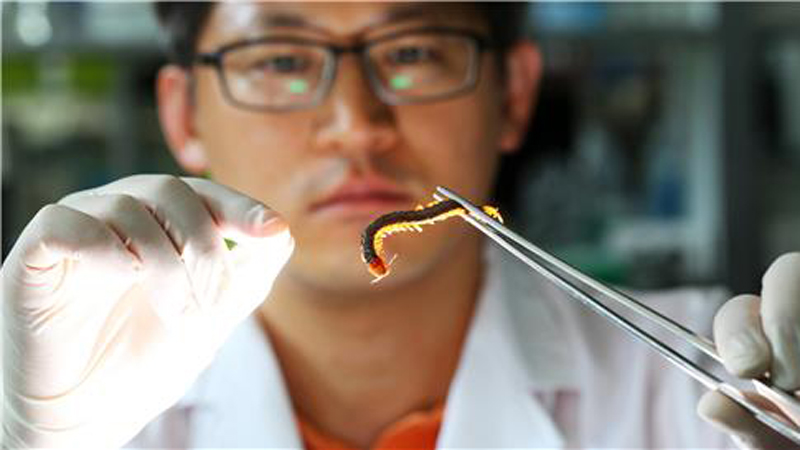
According to the RDA, the extracted antibiotic, scolopendrasin I, is an antimicrobial peptide excreted by centipedes to fight germs. The substance was proven effective in the treatment of atopic dermatitis and against bacteria with increased tolerance to existing antibiotics. (image: Rural Development Administration)
SEOUL, Aug. 10 (Korea Bizwire) – Sometimes we want to stay blind to what’s in the food, drinks, and other products like cosmetics that we consume or use on a daily basis. And perhaps to shatter some of this illusion, Korea’s Rural Development Administration (RDA) has just succeeded in commercializing cosmetics using an antibiotic substance found in scolopendra subspinipes, a large centipede species.
These centipedes have long been known for their antibacterial efficiency and ability to improve blood circulation, and have been used in Korean traditional medicine for strokes and arthritis.
According to the RDA, the extracted antibiotic, scolopendrasin I, is an antimicrobial peptide excreted by centipedes to fight germs. The substance was proven effective in the treatment of atopic dermatitis and against bacteria with increased tolerance to existing antibiotics.
When atopy transpires, the amount of immunoglobulin E and histamine, known to cause rubefaction and edema, increases. But once scolopendrasin I was injected into lab mice, the atopy-related substances decreased by 37 to 57 percent and 71 to 82 percent, respectively. The RDA added that scolopendrasin I was also able to fight the substances with an improved capacity of 15 to 42 percent compared to existing medicines for atopic dermatitis.
The administration filed for a scolopendrasin I patent in 2013, and has since passed on the technology to various companies, including a cosmetics manufacturer that recently launched a new product using the centipede’s antibiotic.
Two other manufacturers are also in the midst of developing prototypes for future commercialization.
“The use of scolopendrasin I is not limited to cosmetics,” said Hwang Jae-sam, a senior agricultural researcher at the RDA. “We’ll do our best help it become further commercialized in other fields including medicine.”
By Kevin Lee (kevinlee@koreabizwire.com)






